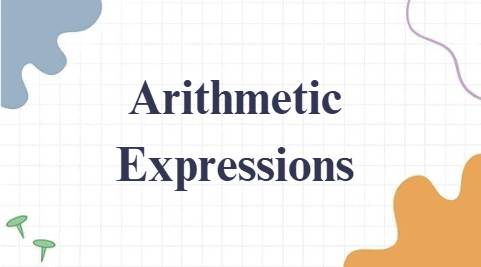
Q1: Rewrite the expression 45 − (12 + 8) by removing the brackets and explain the changes in the signs of the terms inside.
Ans: When removing the brackets preceded by a negative sign, the signs of the terms inside change.
Thus, 45 − (12 + 8) becomes 45 − 12 − 8.
On solving , 45 – 12 – 8 = 25.
Q2: Identify the terms in the expression 7 × 3 + 10 − 5 and evaluate its value.
Ans: The terms are 7 × 3, 10, and −5. Evaluating the expression:
7 × 3 = 21, then
21 + 10 = 31, and finally 31 − 5 = 26.Thus, the value of the expression is 26.
Q3: Compare the expressions 25 + 13 and 24 + 14 without calculating their values. Explain your reasoning.
Ans: The first expression 25 + 13 can be written as
(24 + 1) + (14 − 1), which simplifies to 24 + 14.
Thus, both expressions are equal.
Q4: Write an expression for the total cost if 5 notebooks cost ₹12 each and 3 pens cost ₹8 each. Also, identify the terms.
Ans: The expression is 5 × 12 + 3 × 8.
The terms are 5 × 12 and 3 × 8.
The total cost is 60 + 24 = ₹84.
Q5: Simplify the expression 100 − (30 − 10) by removing the brackets and justify the sign changes.
Ans: Removing the brackets gives 100 − 30 + 10.
The sign of 30 becomes negative, and −10 becomes positive.
Hence the equation becomes, 100 – 30 + 10 = 110 – 30 = 80.
The value is 80.
Q6: A shopkeeper sells apples at ₹20 per kg and oranges at ₹15 per kg. A customer buys 3 kg of apples and 2 kg of oranges.
(a) Write an expression for the total cost.
(b) Compare the two expressions and verify if they yield the same value.
Ans:
(a) The expression for the total cost is 3 × 20 + 2 × 15.
(b) Let’s write two different expressions:
- First expression: 20 × 3 + 15 × 2
- Second expression (actual total): ₹60 + ₹30
Now check if they are equal:
- 20 × 3 = 60
- 15 × 2 = 30
- So, 60 + 30 = ₹90
Both expressions give the same result.
Q7: Consider the expressions 50 − (15 + 5) and 50 − 15 − 5.
(a) Evaluate both expressions.
(b) Explain why the second expression is derived from the first by removing brackets.
(c) What happens if the brackets are preceded by a positive sign, such as 50 + (15 − 5)?
Ans:
(a) Both expressions evaluate to 30.
As 50 − (15 + 5) = 50 – 15 – 5
= 50 – 20
= 30
and 50 − 15 − 5 = 50 – 20 = 30
(b) When brackets are removed, the negative sign before the brackets changes the signs of the terms inside.
Hence, 50 − (15 + 5) = 50 − 15 − 5.
(c) If the brackets are preceded by a positive sign, the signs inside remain unchanged: 50 + (15 − 5) = 50 + 15 − 5 = 60.
Q8: A train has 8 compartments with 12 seats each and 5 compartments with 15 seats each.
(a) Write an expression to find the total number of seats.
(b) Use the distributive property to show that both expressions yield the same result.
Ans:
(a) The expressions are:
8 × 12 + 5 × 15
(b) The distributive property does not apply here directly. The correct evaluation is:
8 × 12 = 96 and 5 × 15 = 75, so total seats = 96 + 75 = 171.
Q9: A snail climbs 4 cm up a pole during the day and slips back 2 cm at night. The pole is 12 cm high.
(a) Write an expression to represent the snail’s progress after 3 days.
(b) Use the expression to find how many days it will take for the snail to reach the top.
Ans:
(a) After 3 days, the snail’s progress is 3 × (4 − 2) = 6 cm.
(b) On the 5th day, the snail reaches 4 × (4 − 2) + 4 = 12 cm (since it doesn’t slip back after reaching the top).
Q10: Riya is saving money to buy a toy that costs ₹250. She saves ₹20 every week from her pocket money.
(a) Write an expression to represent how much she saves after 5 weeks.
(b) How many weeks will it take for her to save enough money to buy the toy?
Ans:
(a) Amount saved in 5 weeks = 5 × 20 = ₹100
(b) To find the number of weeks to save ₹250:
Let the number of weeks be w.
20 × w = 250
w = 250 ÷ 20 = 12.5 weeks
So, she will need 13 weeks to save enough money.